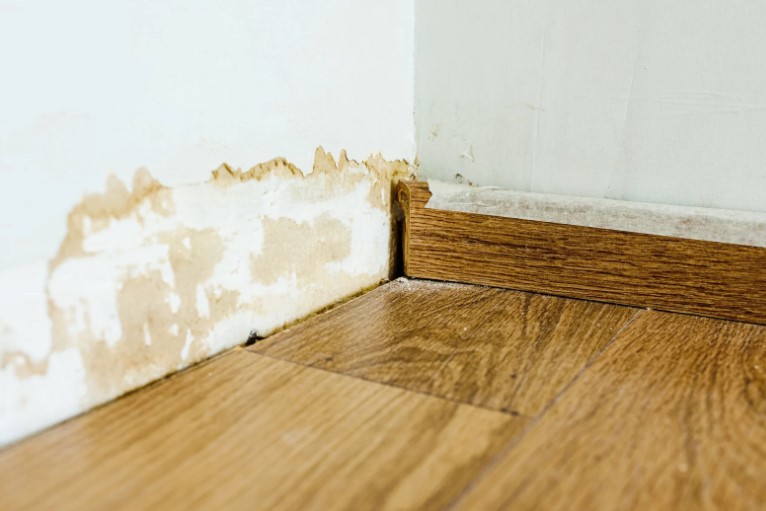Mould on painted walls is a common issue, particularly in areas with high humidity or poor ventilation. Left unchecked, it can cause not only unsightly stains but also potential health risks. As someone who has dealt with this problem, I understand the urgency of finding a solution that both removes the mould effectively and preserves the integrity of your paint. In this guide on how to remove mould from painted walls, I’ll walk you through the best methods to safely and efficiently remove mould from your painted walls.
What Causes Mould to Grow on Painted Walls?
Mould thrives in environments where moisture and warmth are present. If your home suffers from poor ventilation, leaky pipes, or high humidity levels, these conditions can create the perfect breeding ground for mould on painted walls. The spores land on the surface and, if not addressed, quickly spread, leading to potential damage to the paint and the underlying wall.
Understanding the causes is the first step in both treating and preventing mould growth. By identifying and addressing those factors, you can prevent future happenings.
What Are the Best Methods for Removing Mould from Painted Walls?
When it comes to removing mould from painted walls, you have a few options, ranging from household remedies to commercial cleaners.
Using Household Remedies
Household remedies can be surprisingly effective in dealing with mould.
-
Vinegar
One of the most popular natural solutions, vinegar has antifungal properties that can kill mould at its roots. To use it:
- Fill the undiluted white vinegar in a spray bottle.
- Spray the vinegar directly onto the mouldy area and let it sit for an hour.
- Wipe the area with a clean cloth and warm water.
-
Baking Soda
Baking soda is another safe and natural mould remover, particularly useful for light stains.
- Mix a teaspoon of baking soda with water in a spray bottle.
- Shake well and spray the solution on the mould.
- Use a scrubbing brush to gently remove the mould, then rinse with water.
Using Commercial Mould Cleaners
For tougher mould problems, commercial mould cleaners might be necessary. These products are designed to kill mould effectively and are generally safe for use on painted walls, though it’s important to follow the instructions carefully.
- Types of Commercial Cleaners: Look for products labeled specifically for use on painted surfaces or multi-surface cleaners that mention compatibility with paint.
- Application Tips: Always wear gloves and ensure the area is well-ventilated. Apply the cleaner according to the manufacturer’s instructions, typically involving spraying, letting it sit, and then wiping clean.

How Do I Safely Remove Mould Without Damaging the Paint?
Removing mould without damaging your paint requires careful preparation and the right technique.
Preparing the Area
Before you begin, make sure to protect yourself and your surroundings:
- Protective Gear: Wear gloves, a mask, and eye protection to avoid direct contact with the mould and cleaning agents.
- Surrounding Surfaces: Cover the floor and nearby furniture with a plastic sheet or old towels to catch any drips.
Step-by-Step Removal Process
- Test First: Always test your cleaning solution on a small, inconspicuous area of the wall to ensure it won’t damage the paint.
- Apply Cleaner: Apply your chosen cleaning solution (vinegar, baking soda, or a commercial cleaner) to the mouldy area.
- Let It Sit: Allow the solution to sit on the mould for certain period of time — usually around 30 minutes to an hour.
- Gently Scrub: Use a soft-bristled brush or sponge to scrub the area gently. Avoid using too much force, as this can damage the paint.
- Rinse and Dry: Wipe the area with a clean, damp cloth to remove any residue. Ensure the wall is thoroughly dried to prevent future mould growth.
Pro Tip: If the paint starts to bubble or peel during the process, stop immediately and reconsider the cleaning method or consult a professional.

How Can I Prevent Mould from Returning on Painted Walls?
Prevention is key to keeping mould at bay. After you’ve successfully removed the mould, take these steps to prevent it from coming back:
Improving Ventilation
Proper ventilation is crucial in preventing mould growth. Here are a few ways to improve airflow in problem areas:
- Install Fans: Consider installing extractor fans in bathrooms and kitchens where moisture levels are typically higher.
- Open Windows: Regularly open windows to allow fresh air to circulate, especially after activities that generate steam or moisture.
Using Anti-Mould Paint
Anti-mould paints contain fungicidal properties that can help prevent mould growth on walls. Here’s how you can use them:
- Preparation: Make sure the wall is completely free of mould and dry before applying the paint.
- Application: Follow the manufacturer’s instructions, usually involving one or two coats. Anti-mould paint can be a great long-term solution, particularly in areas prone to dampness.

Conclusion
Removing mould from painted walls doesn’t have to be a daunting task. With the right tools and methods, you can safely eliminate mould and restore your walls to their original condition. Remember to address the underlying causes to prevent mould from returning, and consider using anti-mould paint for added protection. Acting quickly and taking preventive steps will help keep your home mould-free. Follow these steps to understand about removing mould from painted walls.
FAQs: Removing Mould from Painted Walls
1. Can mould return after cleaning?
Yes, mould can return if the underlying cause, such as high humidity or poor ventilation, isn’t addressed. Implementing preventive measures is crucial.
2. What should I do if the mould stain won’t come off?
If the stain persists, try a stronger cleaning solution or consider repainting the area with anti-mould paint.
3. Is bleach safe to use on painted walls?
While bleach is effective at killing mould, it can be harsh on painted surfaces. If you thought of using it, dilute the bleach with water and test it on a small area first.


0 Comments